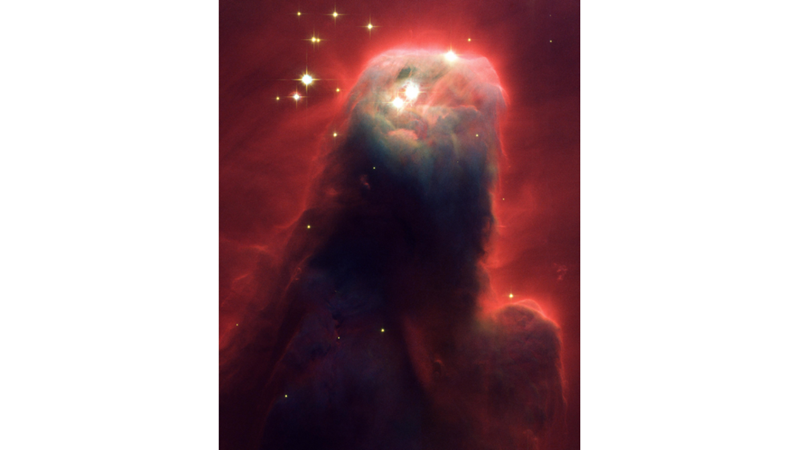The image almost seems to have a roar to it, doesn't it?
No need to be frightened: What looks like a monster throwing its head back in an angry red sea is actually just a column of gas and dust. The Cone Nebula is located 2500 light years away in the constellation Monoceros. This image, taken by NASA's Hubble Telescope, shows the upper 2.5 light years of the nebula, whereas the entire nebula is 7 light years across. Giant cone-shaped pillars of cold gas are often found in the vast regions where stars are born. Astronomers think that these columns are incubators for developing stars.
Over millions of years, radiation from hot, young stars has slowly eroded the nebula (located outside the upper part of the image). This process causes the hydrogen gas to glow, creating a red halo of light around the column. On a smaller scale, a similar phenomenon occurs in the gas surrounding a single star, forming the arc-shaped structure seen in the upper left corner of the Cone. Over time, only the densest regions of the Cone will survive. It is in these dense areas that stars and planets are likely to be born.
Image description:
Against a dramatic red background, a dark column of gas and dust stretches upwards, its top illuminated by the reflected light of nearby stars. Some stars are scattered in the upper part of the image. There are also a few stars at the bottom of the column.
Credit: NASA, H. Ford (JHU), G. Illingworth (USCS/LO), M. Clampin (STScI), G. Hartig (STScI), ACS Science Team and ESA


 Nielawore
Nielawore









Yorumlar
Nice
Yorum yazmak için lütfen giriş yapınız